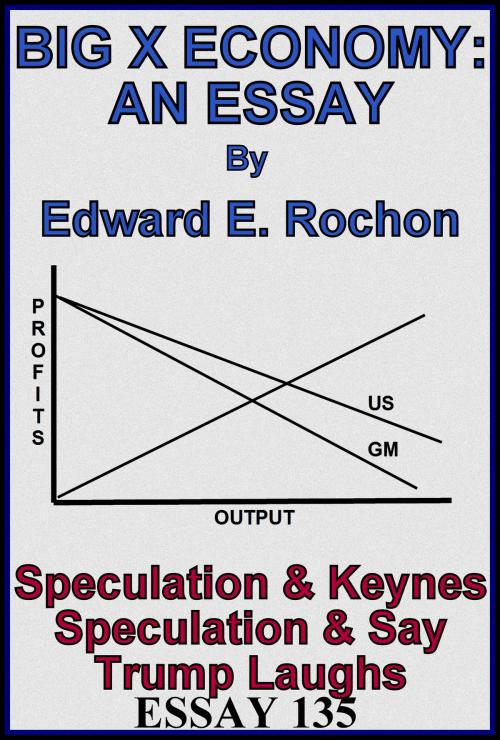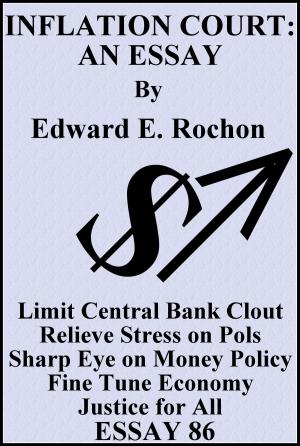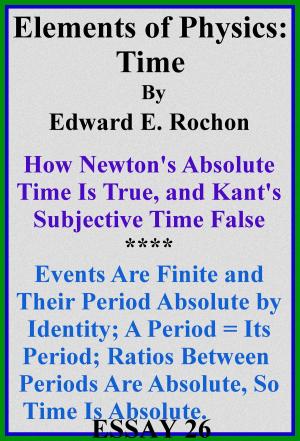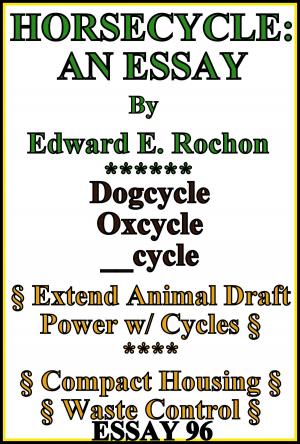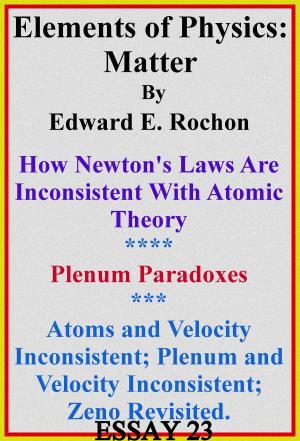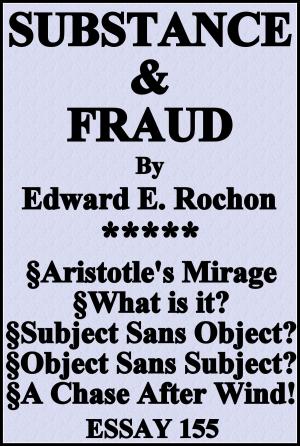Big X Economy: An Essay
Business & Finance, Business Reference, Government & Business, Nonfiction, Social & Cultural Studies, Political Science, Politics, Economic Policy| Author: | Edward E. Rochon | ISBN: | 9781370714797 |
| Publisher: | Edward E. Rochon | Publication: | July 10, 2017 |
| Imprint: | Smashwords Edition | Language: | English |
| Author: | Edward E. Rochon |
| ISBN: | 9781370714797 |
| Publisher: | Edward E. Rochon |
| Publication: | July 10, 2017 |
| Imprint: | Smashwords Edition |
| Language: | English |
A preface asks whether laissez-faire economics is a perpetual motion machine with Say's Law as the machine. The scope of the essay is stated. Chapter 1 discusses Karl Marx's Surplus Value and flaws in its assertion. For example, lower wages produce cheaper goods that lower wages can buy at lower prices. It discusses cutting labor expenses without increasing market share and where the profits might go. We see flaws in Marx's assertion. We critique Say's Law from the point of view of speculation in particular. Driving down demand by consumers to lower prices and curtailing supply by sellers to increase prices stalls the economy. Inventory goes down; confidence that people must buy in the end starts production up again. And in the end we are all dead as it is said about the lag between bust and recovery. Chapter 2 discusses Big X economics. We note that it matters where stimulant money goes. Expanding the money supply that spurs shutting down production at home so as to invest offshore is not what the taxpayer should be paying for. We target key industries and extend the profit/production cutoff point to account for people who lack money to buy. This creates jobs, paychecks and production of goods. It is important to make the right decisions. Bad investment is bad investment whether by GM or by Uncle Sam. We must make the decisions a three ring circus for politicians. People must go on the record, economic forecasts and goals laid out in the open until the system is fine tuned. If the economy is not broke, let it alone and spare yourself the embarrassment of mismanaging the economy. But full employment should be the goal for social stability and future prosperity and security. Chapter 3 jokes about what the government does with surplus production, should estimates of purchases go awry. The Donald has a car sale at the White House. We finish by outlining the economy over the last third of a century and how America lost its jobs and creditor nation status with some bitterness added on the author's part.
A preface asks whether laissez-faire economics is a perpetual motion machine with Say's Law as the machine. The scope of the essay is stated. Chapter 1 discusses Karl Marx's Surplus Value and flaws in its assertion. For example, lower wages produce cheaper goods that lower wages can buy at lower prices. It discusses cutting labor expenses without increasing market share and where the profits might go. We see flaws in Marx's assertion. We critique Say's Law from the point of view of speculation in particular. Driving down demand by consumers to lower prices and curtailing supply by sellers to increase prices stalls the economy. Inventory goes down; confidence that people must buy in the end starts production up again. And in the end we are all dead as it is said about the lag between bust and recovery. Chapter 2 discusses Big X economics. We note that it matters where stimulant money goes. Expanding the money supply that spurs shutting down production at home so as to invest offshore is not what the taxpayer should be paying for. We target key industries and extend the profit/production cutoff point to account for people who lack money to buy. This creates jobs, paychecks and production of goods. It is important to make the right decisions. Bad investment is bad investment whether by GM or by Uncle Sam. We must make the decisions a three ring circus for politicians. People must go on the record, economic forecasts and goals laid out in the open until the system is fine tuned. If the economy is not broke, let it alone and spare yourself the embarrassment of mismanaging the economy. But full employment should be the goal for social stability and future prosperity and security. Chapter 3 jokes about what the government does with surplus production, should estimates of purchases go awry. The Donald has a car sale at the White House. We finish by outlining the economy over the last third of a century and how America lost its jobs and creditor nation status with some bitterness added on the author's part.
